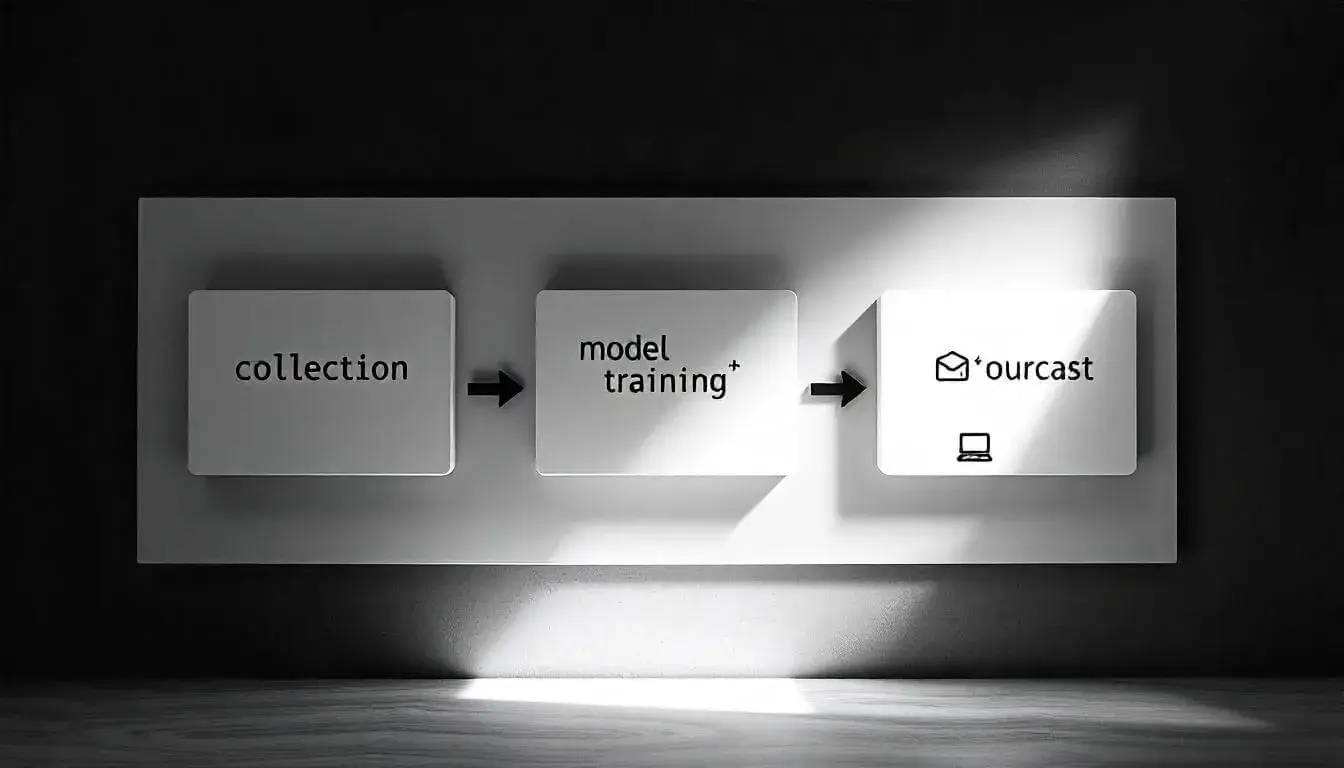Personalized product recommendation systems help e-commerce sites suggest products to customers based on their preferences and behaviors. In this guide, we’ll walk through building a simple recommendation system using machine learning (ML) and show how to use GitHub to share and collaborate on the project. We’ll cover every step, from creating the model to collaborating with your team using GitHub.
What You’ll Need
- Basic Python knowledge
- Familiarity with Git and GitHub basics
- Jupyter Notebook (or any Python IDE)
- GitHub account
Steps Overview
- Set Up the Project Repository on GitHub
- Prepare Your Data
- Build a Simple Product Recommendation System
- Share and Collaborate on GitHub
- Improve and Update the Model Together Let’s start!
Step 1: Set Up the Project Repository on GitHub
The first step is to create a GitHub repository where you and your team can store and manage your recommendation system project.

- Go to GitHub and sign in.
- Click the New button to create a new repository.
- Name your repository (e.g., product-recommender).
- Add a description (e.g., “Simple product recommendation system for e-commerce”).
- Choose Public or Private based on your needs.
- Check Add a README file.
- Click Create repository.
Your GitHub repository is now set up and ready for you to upload code and data.
Step 2: Prepare Your Data
The model will need data to make product recommendations. Here’s how to prepare some basic data to get started:
- Collect Data: You can create a small sample dataset manually or download sample e-commerce data from sites like Kaggle. The data should include:
- User ID: unique identifier for each user.
- Product ID: unique identifier for each product.
- Interactions: information about the user’s interactions with products, like purchases, views, or ratings.
For example:
user_id,product_id,rating 1,101,5 1,102,3 2,101,4 3,103,5
-
Clean Data: Use a Jupyter Notebook to clean your data. Make sure there are no missing values and that each interaction is meaningful for recommendations.
- Upload Data to GitHub: Create a folder called
datain your GitHub repository and upload the dataset (e.g.,product_data.csv) there.
Step 3: Build a Simple Product Recommendation System
Let’s build a simple recommendation model using collaborative filtering, a common method for recommendations based on user interactions.

-
Open Jupyter Notebook: In the root folder of your repository, create a new Jupyter Notebook (e.g., recommendation_model.ipynb).
-
Load Data: Use Python code to load your dataset. Below is an example: ``` import pandas as pd
Load the data
data = pd.read_csv(‘data/product_data.csv’) print(data.head())
3. **Create a Pivot Table:** Turn the data into a pivot table where each row represents a user, and each column represents a product. The values are the user’s rating or interaction with that product.
user_product_matrix = data.pivot_table(index=’user_id’, columns=’product_id’, values=’rating’).fillna(0)
4. **Build a Similarity Matrix:** Calculate the similarity between products using cosine similarity, which is common for recommendation systems.
from sklearn.metrics.pairwise import cosine_similarity
Calculate similarity
product_similarity = cosine_similarity(user_product_matrix.T) product_similarity_df = pd.DataFrame(product_similarity, index=user_product_matrix.columns, columns=user_product_matrix.columns)
5. **Create a Recommendation Function:** Build a function to recommend products based on product similarity.
def recommend_products(product_id, num_recommendations=5): recommendations = product_similarity_df[product_id].sort_values(ascending=False).head(num_recommendations + 1) return recommendations.index[1:] # Exclude the product itself
Test the function
print(“Recommended products for product 101:”, recommend_products(101))
6. **Save Your Notebook:** Commit and push your Jupyter Notebook to the GitHub repository so your team members can access and review it.
## Step 4: Share and Collaborate on GitHub
With your recommendation system set up, use GitHub to share and collaborate on the project with your team. Here’s how:
1. **Invite Collaborators:** In your repository, go to **Settings > Collaborators** and add team members by entering their GitHub usernames.
2. **Create Branches for Feature Development:**
+ Use branches to work on new features or improvements without affecting the main code.
+ For example, you might create a branch called `improve-model` to try new ML techniques.
git checkout -b improve-model ```
- Make Pull Requests:
- Once you or a team member has made improvements, create a Pull Request (PR) to merge changes into the main branch.
- The team can review the PR, leave comments, and discuss improvements directly in GitHub.
- Use Issues for Tracking Tasks:
- Create Issues to track tasks, bugs, or feature requests.
- For example, create an issue titled “Try matrix factorization for recommendations” to explore more advanced techniques.
Step 5: Improve and Update the Model Together
As you and your team work together on GitHub, here are some best practices for improving the recommendation system over time:
- Experiment with Different Models:
- Try other recommendation techniques, like matrix factorization or deep learning models, on a new branch.
- Document your experiments and results in the GitHub repository.
- Add Unit Tests:
- Add tests to ensure your recommendation system works correctly as it grows.
- Store the tests in a separate file, like
test_recommendations.py, and run them regularly.
- Document Your Code:
- Use the README file to document how to use the recommendation system.
- Explain how to run the notebook, how to add data, and any installation requirements.
- Regularly Merge Changes:
- Review and merge PRs often to keep the codebase up-to-date.
- Communicate through GitHub comments to resolve conflicts or discuss changes.
- Track Model Performance:
- Create a method to evaluate your model’s recommendations and track its performance over time.
- Share evaluation results in the GitHub repository, so the team can see the impact of changes.
Conclusion
Congratulations! You’ve created a simple product recommendation system and used GitHub to collaborate with your team on the project. By following these steps, you can continue improving the recommendation model over time and adapt it for larger e-commerce applications. Collaborative ML projects like this not only help build better systems but also help team members learn from each other.
GitHub is a powerful tool for sharing code, tracking improvements, and making collaborative machine learning projects more organized and effective. Enjoy building your product recommender, and happy coding!
- How to Use GitHub Copilot for E-commerce Code Development
- Deploying a Scalable E-commerce Backend with GitHub Actions and Docker
- How to Use GitHub’s Community Features to Gather Feedback on E-commerce Features
- GitHub Codespaces: The Ultimate Tool for E-commerce Development Teams
- Creating a Personalized Product Recommender: Using GitHub to Build and Share Machine Learning Models
- Building a Plugin or Extension for Your E-commerce Platform: Starting with GitHub
- Building a Headless E-commerce Storefront: GitHub as Your Collaboration Hub
- Best Practices for Collaborative E-commerce Development on GitHub
- Automating E-commerce Testing with GitHub Actions and Selenium
- Top GitHub Repositories for E-commerce Development
- How to Use GitHub Actions for Ecommerce Workflows


